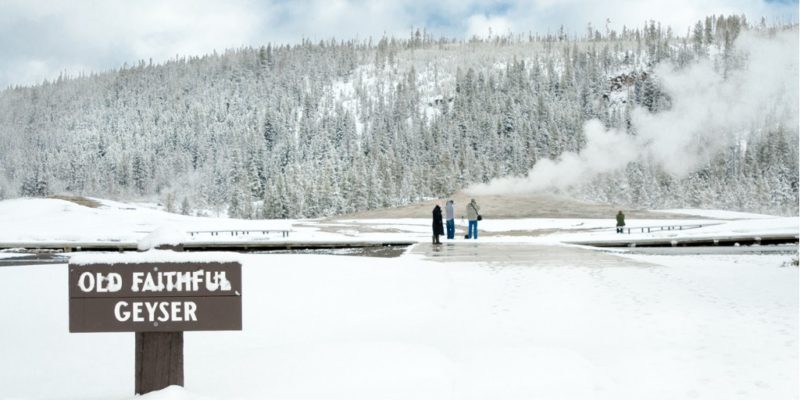This past May, six ATA and CET staff members traded their offices in downtown Washington, DC for a farm in Puerto Rico. Instead of developing travel experiences, they spent time helping redevelop a community devastated by Hurricane Maria. They were part of the 18th summit of Tourism Cares, a non-profit that unites members of the travel industry to make a positive impact on destinations in need. Along with some 150 volunteers representing everything from AFAR magazine to travel insurance companies, our staff members worked on a project linked to renowned chef and do-gooder José Andrés’s World Central Kitchen (WCK). Andrés famously arrived on the island in 2017 to make and deliver food in the immediate aftermath of the hurricane, but his efforts there since aim to strengthen Puerto Rican communities for the future. Through WCK, he is developing community kitchens and sustainable agricultural programs that will allow Puerto Ricans to rely on their own produce—not imports—if and when the next storm hits. Our team was based on a farm in Yauca, and spent time working in conjunction with WCK, planting trees to prevent erosion, repainting community buildings, and more. Tourism Cares was founded in 2003 to help get the US tourism industry back on its feet in the wake of 9/11. For ATA, it offered a way to turn our commitment to responsible travel into action. We began participating in 2005 and haven’t stopped. Our first project was clearing out the forests surrounding George Washington’s Virginia homestead, Mount Vernon. They had been badly damaged by Hurricane Isabel and filled with debris over decades of neglect. In the space of a few days, the Tourism Cares volunteers did work that would have taken the site’s staff 20 years to complete, and allowed the forest to begin to regenerate. The following year found us camping in FEMA tents in Biloxi, Mississippi, faced with the inconceivable destruction wrought by Hurricane Katrina. “What we saw in Mississippi,” says Chase Poffenberger, our Executive Vice President and one of the leaders of our Tourism Cares team, “It was unbelievable.” There our volunteers worked to rebuild three museums that had been absolutely devastated by the storm. Since then, Chase and five or six staff members—they pick names out of a hat every year—have helped remove invasive species from a state park in Minnesota and restore Miami Marine Stadium, a historic seaside landmark that Chase remembers as “beautiful in its crumbling disrepair.” On Coney Island, they painted sites along the boardwalk, and they planted native seeds to revive forests in New Orleans. Each team can choose the nature of the work they do, whether it’s light or medium labor or skilled. Working side by side to help a place in need is a great way to build relationships with other members of the industry and also within our team. The summits usually last a few days, but ATA staff add on an extra day to explore the sites of the region. Not only does it allow us to know the destination better, but it also gives us more focused time to bond with colleagues in a setting far different from the office. Next year the Tourism Cares summit will be held in Colombia—its first outside of North America. ATA will be there. Says Chase, “We see Tourism Cares as one of our pillars as we invest in our field, our community, and our world.”
News & Announcements
The Recession Playbook for Travel Planners: What You Can Do Now
A few weeks ago, one of our partners asked us what our “Recession Playbook” looked like. It was the middle of summer: unemployment was at a 50-year low, the Fed just cut interest rates, the Euro was trading favorably, and consumer sentiment was positive. However, news of the U.S’s trade war tactics and political uncertainly heading into an presidential election year gave her pause as she noticed an August slowdown in bookings. ATA is no stranger to recessions; in our nearly 70-year history, we have weathered many economic downturns and external events. Here are a few of our thoughts on how to prepare. What indicators does ATA rely on to try to predict a recession and take action? The most common indicators we look at include: Unemployment: Low unemployment signals fewer available workers for each job opening. This creates demand for skilled workers at higher wages. However, unemployment that drops too low poses inflation risks. Consumer Confidence Index: This index measures U.S. consumers’ degree of optimism in the economy as expressed in consumer spending. Housing Starts: While the rate of home building may not seem related to travel, the construction industry represents nearly 20% of GDP and is seen as a leading indicator of the economy. Why? Home builders will not break ground on new homes if they don’t think the next 12 months will be stable enough to first build, then sell, a new home. US Citizen Air Traffic Overseas: A core responsibility of the Office of Travel & Tourism, located within the Department of Commerce, is to collect, analyze, and disseminate international travel and tourism statistics for the United States. Growth in outbound travel often signals business and consumer confidence. What usually happens to consumer travel behavior in a recession? For affinity travel brands, booking patterns change, particularly if the stock market is volatile. Travelers often book trips closer to departure when they sense economic uncertainty. They may postpone some travel if multiple trips are planned, but not delay or cancel all travel. In addition, we often see bookings slowdown in a presidential election year. What steps can travel planners take now? Strengthen Your Brand Communicate your brand’s unique benefits frequently so your customers really know what you stand for. Create urgency to book travel soon with compelling “calls to action.” “Cast” Your Trips Carefully Trip leadership is often a brand’s most compelling value proposition. Choose and “cast” your faculty, study leader, or expert carefully. Make sure they value their role of “host” as much as “expert.” Focus on Quality Now more than ever, word of mouth referrals are very important. Ensure each element of your customers’ trip experiences is executed flawlessly, from your courteous first phone call to the inquisitive trip survey you send when they return. Keep Marketing Brands that market aggressively though economic downturns come out ahead in retaining customers. Avoid Becoming a Commodity at All Costs It is challenging to compete on price in a recession. Instead, focus on making your trips “unshoppable” in the marketplace by reflecting your organization’s unique culture and values. Diversify Make sure you offer a wide variety of destinations and trip types to appeal to many types of travelers. How has ATA prepared for, and weathered so many recessions? We conserve in the present, but invest for the future. To maintain or improve its performance, a business must sell more or spend less; it’s that simple. When we don’t see sales growth on the horizon, we get very disciplined and creative in how we cut non-essential spending. However, we never sacrifice our investment in the future, and prioritize new program research and development. What We Learned From Past Recessions The Gulf War Era Recession (1990-91) We learned that timing of bookings matter! Travelers who were already booked on trips when the economy softened tended to stay booked, so cancellations were not rampant. Instead, a lack of new bookings weakened tour enrollments during this period. Post 9/11 Economic Shock and 2nd Gulf War Recession (2003) The real effect of September 11th hit the travel industry in 2003 instead of 2002, since many travelers had trips booked in 2002. We learned that relaxing cancellation terms for a period of time to encourage travelers to book travel in an uncertain time was a useful strategy. However, several overleveraged travel companies could not survive the 9/11 shock and the marketplace consolidated into fewer companies. Housing Crisis and the Great Recession (2008-2009) The downturn in travel occurred quickly and precipitously. Starting in the fall of 2008, bookings fell approximately 40% in one season. We learned that we needed to act quickly to cut overhead and reduce expenses. Despite a few lean years, it was a time of unusual creativity and experimentation for ATA that set us up for growth when the economy improved. President Obama’s surprise announcement allowing people-to-people travel to Cuba in 2011 was a serendipitous “game changer” that brought full economic recovery to the educational travel community. We’d love to hear how you’re preparing! Please drop me a note at [email protected].
Overtourism: Save the Date
You’re invited! Come hear ATA’s President, Kate Simpson, speak on the implications of “overtourism” and how to avoid becoming a part of the problem when traveling. This insightful evening program is being put on by Smithsonian Associates on Wednesday, August 21st at 6:45 PM. Get Tickets Read more about the event, as described by Smithsonian Associates: “It happens to even the most adventurous travelers: You get to your destination only to find the lines are long, the crowds are pushy, and the whole experience is disappointing and exhausting. From Machu Picchu to Prague to Reykjavik, popular destinations everywhere are being overrun by hordes of tourists, turning a trip into a nightmare for many. But the problem isn’t just an inconvenience for the traveler. There are real and severe implications for the destination in terms of safety, sustainability, economics, and protection of environmental and cultural resources. Happily, there are steps informed travelers can take to ensure their trip isn’t ruined by overtourism–and to avoid becoming part of the problem. Join Washington Post travel writer Andrea Sachs, Martha Honey of the Center for Responsible Travel, and Kate Simpson of Academic Travel Abroad, as they discuss destinations to avoid, places to visit instead, and how to become a more responsible traveler today.”
Why We Attend Women in the World
One snowy evening back in the winter of 2015, I made my way to a gathering of women in a DC hotel ballroom called “Women in the World.” The panels—made up of impressive women representing a variety of fields—gave me my first taste of “live journalism” as legendary writer and editor Tina Brown defines it: “vivid storytelling, stirring videos, and provocative discussions.” I was hooked! The following spring, Kate Simpson, ATA’s President, and I attended the 3-day WITW summit at Lincoln Center in New York, and have attended each year since then. This year, Kate summarized the activists, politicians, CEOs and changemakers that we saw on stage: “From Stacey Abrams to Hillary Clinton, from Ashley Judd to the Soloway sisters (creators of Transparent), from a Uighur woman fighting the detention camp policies of China to a Jordanian woman who established the first self-defense school for women in the Middle East, from exiled Masih Alinejad who started a social media campaign in Iran for women to remove their hijabs to Ibtihaj Muhammad, the Olympic medalist in fencing, from Indra Nooyi (former Pepsico CEO) to Cindy McCain and Glenda Jackson… The list of women changing the world was long and powerful.” Not only does this mini-retreat in New York feed our souls, it has been the catalyst and inspiration for us to continue to make our company better and stronger. Here are some of the changes we’ve made since attending the conference. We offer paid parental leave: Kate and I are both mothers who strung together vacation leave and sick days to fashion our maternity leaves, as many, many mothers before us have done and continue to do. We knew we could do better for ATA’s new parents, and set out to find a way. What began as a new staff policy of two weeks of paid maternity leave four years ago has become a new benefit of 8 weeks of paid parental leave for either father or mother. We no longer request salary history from job candidates: Requesting salary history in the hiring process disproportionately harms women who exit the work force more frequently than men in the course of their careers to raise their families. As a result, women can fall behind in salary. Our own instincts were validated at Women in the World when we heard Chirlane McCray, wife of New York City major Bill DeBlasio, speak passionately about her work to ban the practice entirely in New York. As a result, our hiring practices are more transparent than ever, and salary history is never a factor in determining a new employee’s starting salary. We established a diversity and inclusion committee: We are a company that embraces difference and celebrates diverse cultures, and we believe in learning from those who do not share our backgrounds, our viewpoints, our experiences. We embrace these values both within our work and our workplace. Diversity within the workplace engenders enriched innovation and creativity, as well as better-informed decisions and well-rounded perspectives. The ATA Diversity and Inclusion Committee, founded formally a couple of years ago, has drafted recommendations on promoting diversity in our recruiting practices and continues to lead our staff training curriculum. We remain committed to our philanthropic goals: Attending Women in the World reminds us that the world’s problems need passionate advocacy and a steadfast commitment to find solutions. We remain committed to our areas of philanthropy: diversifying the field of study abroad through our sponsorship of The Fund for Education Abroad, advancing the travel industry’s positive social and environmental impact with Tourism Cares, supporting displaced peoples through the International Rescue Committeeand conserving our local environment with the Chesapeake Bay Foundation. We can’t wait for next year!
A Trip Concept We Didn’t Expect: Yellowstone During the Government Shutdown
Airline strikes, lost passports, political unrest: dealing with the unexpected is probably the most predictable part of the travel business—and we pride ourselves on being prepared for whatever comes our way. This past January presented a conundrum of a different sort: we had nearly 40 travelers booked on two New York Times Journeys departures of Winter in Yellowstone—and the U.S. government was shut down indefinitely. We immediately contacted our partners on the ground and were able to run the full itinerary with a few logistical adjustments. As the first group arrived, our quick-thinking tour manager Caroline Ogden made contact with an area non-profit and found out that local businesses and vendors had come together voluntarily to keep the park running—cleaning and stocking the bathrooms, emptying the trash, providing freebies to the furloughed park staff. In the evenings, our groups sought out those businesses, including two restaurants in Gardiner, Montana. We ended up meeting the owners and getting to know members of the local community who were volunteering their time to take care of this national treasure. Over the past 50 years, ATA has faced its fair share of crises great and small, and we’ve weathered them all by being nimble, creative, and building strong relationships with our partners. Instead of being hampered by the shutdown, both of these trips became something more than any of us expected: our travelers forged an intimate connection with Yellowstone’s community and became involved in the inspiring local effort to help the park. Says Caroline, “When things don’t go as planned, there is almost always a silver lining if we reach out and talk to people. I think ATA does a great job at building connections whenever possible. Those are the unexpected experiences that participants will remember, and I will too!”
Meet Our Newest Program Managers
When you have discerning clients like we do, your team has to be discerning too—but also creative, well informed, perceptive, and above all, passionate about travel. Our creative team comes to work each day with a tall order: to craft unique travel itineraries that embody our clients’ individual attributes and core values. This often means teasing out pertinent themes—from architecture to military history to culinary traditions—or putting a fresh spin on iconic places. They know how to craft seamless and engaging travel experiences, build strong relationships with our overseas partners, keep up with current events and foresee the unexpected. And they have to wear all kinds of hats: researcher, events coordinator, negotiator, dreamer, writer and diplomat. We’re excited to introduce you to three new program managers on our team. Two are familiar faces at ATA, and one comes to us from the world of environmental consulting. Between them, they have lived in Costa Rica, England, and Madagascar; visited 34 national parks on one road trip; sailed to 12 ports during a semester at sea; and set out on a bucket-list trip to seven European cities as far-flung as London and Istanbul. Without further ado, we present our newest travelsmiths: Jennifer Kefer, our new Senior Program Manager, joined us this past January. An inveterate traveler, she spent three months in an immersive field studies program in Costa Rica, has been to five continents, and takes summer road trips all over the U.S. with her family, exploring everything from factories and roadside attractions to national parks. Her love for travel and her passion for preserving the planet drove her into environmental consulting, where she spent nearly two decades working on climate change and energy policy. Jennifer earned a BA from Brandeis University in environmental studies, a master’s in environmental management from the Yale School of Forestry and Environmental Studies and a law degree from Yale Law School. She considers herself a life-long student with a deep curiosity about the world—which is what led her to put her skills to use at ATA, researching, building coalitions, and inspiring others to care about the world by experiencing it firsthand. There’s a chance you or your travelers have already spoken to one of our new program managers, Megan Burden. She joined ATA in 2012 as a reservations agent, booking travelers on the trips we operate for our clients. In 2016, she was promoted to manager of the entire Guest Services team. Her experience directly communicating with our clients’ guests gives her a valuable perspective when crafting itineraries. A native of Seattle, Megan developed her passion for travel during a Semester at Sea, when she explored 12 ports on four continents. After achieving a B.A. in international affairs and history from the University of Colorado, she joined the Peace Corps as an English as a foreign language teacher in Madagascar, and was posted to a village in the island’s remote central highlands. She has worked as a staff intern at the U.S. Holocaust Memorial Museum in Washington, D.C., and at International Peace Initiatives, a non-profit in Kenya that works to improve local livelihoods. Baltimore native Julie Elias came to ATA in 2015 as a program assistant, helping the team with background research and development for new and existing trip concepts. She was promoted to program coordinator in 2017 and became a full-fledged program manager this January. Julie has a B.A. in American Studies from Dickinson College, and a wide range of interests that include cooking, film production, books, trivia nights, and of course travel. She studied abroad in Norwich, England, and set off after college on a far-ranging trip that took her to a number of places on her bucket list, including Istanbul, Israel, Salzburg, Budapest, France, Germany and back to England. We are pleased to welcome Julie, Megan and Jennifer to our team of program managers, and look forward to the compelling adventures they concoct for our clients!







